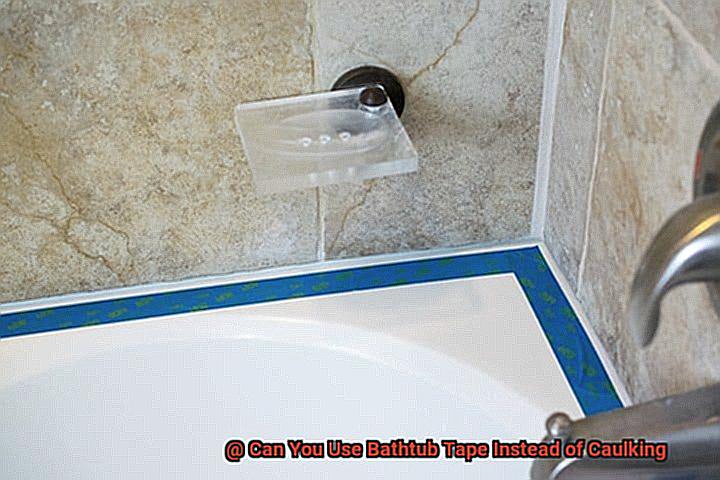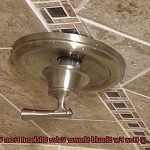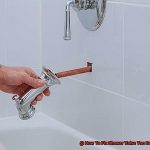Is your bathtub in need of some TLC?
Are you tired of the hassle and mess of caulking? Well, have no fear because bathtub tape is here.
That’s right, bathtub tape is a flexible and waterproof tape that can fix leaks and cracks in your tub or shower. But can it really replace caulking?
In this article, we’ll explore the pros and cons of both options to help you make an informed decision. We’ll cover everything from ease of use to durability and cost-effectiveness.
Plus, we’ll give you step-by-step instructions on how to apply bathtub tape correctly so that even if you’re not a licensed plumber, you can still tackle this DIY project with confidence. So whether you’re a seasoned pro or a beginner DIYer, this article has got something for everyone.
We want to make sure that your bathroom maintenance is stress-free and efficient. So sit back, relax, and let us take you on a journey through the world of bathroom repairs.
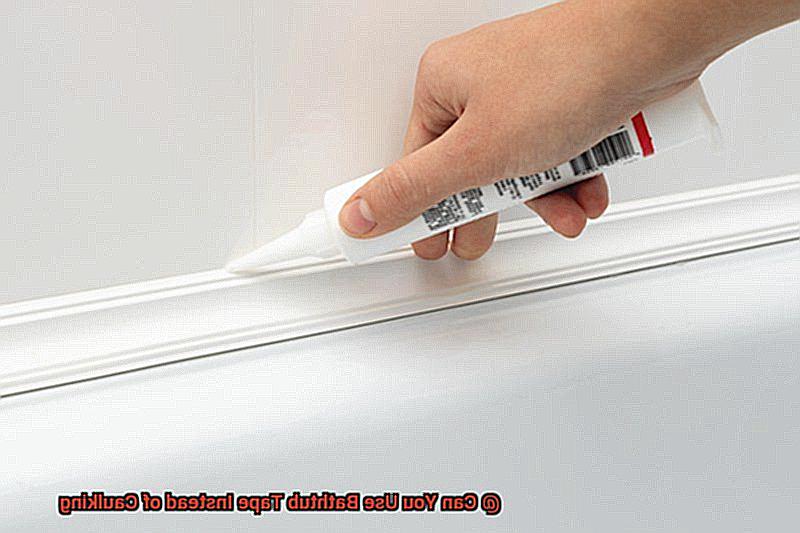
By the end of this article, you’ll have all the information you need to decide if bathtub tape or caulking is the right choice for your tub repair needs.
Contents
What is Bathtub Tape?
This waterproof sealing tape is specifically designed for use in wet areas like bathrooms, kitchens, and laundry rooms. With its ability to withstand exposure to water, steam, and humidity while retaining its adhesive properties, bathtub tape is an easy and reliable solution.
Unlike traditional caulking, which requires a clean and dry surface for application, bathtub tape can be applied directly over existing caulk, grout, or tile. It’s made from a stretchy fabric that adapts to uneven surfaces and dries quickly, allowing you to use your tub or shower sooner.
When selecting a bathtub tape, consider whether you want silicone-based or acrylic-based options. Silicone-based tapes are more robust and flexible, making them ideal for high-traffic areas like shower stalls and tub surrounds.
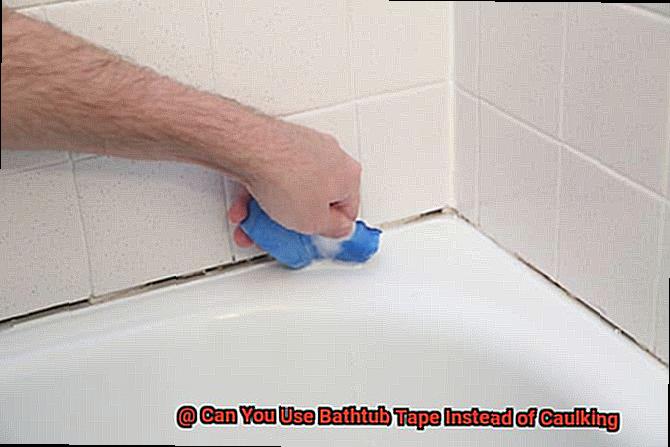
On the other hand, acrylic-based tapes are less expensive but may not last as long or adhere as well in wet conditions. Bathtub tape comes in a range of colors and widths that can match the decor of your bathroom.
Some even have textured surfaces for extra grip and slip prevention. Properly applied bathtub tape creates a watertight seal that prevents water from seeping behind tiles or into the subfloor.
While bathtub tape isn’t suitable for larger areas or those with high water exposure, it’s an excellent option for quick fixes on small gaps and cracks around your tub or shower.
Advantages of Using Bathtub Tape over Caulking
The advantages of using bathtub tape over caulking are numerous and undeniable. One of the biggest advantages of bathtub tape is its ease of use.
Unlike caulking, which requires a steady hand and a lot of patience, bathtub tape can be easily cut to the desired length and applied directly over existing caulk or tile. It’s that simple.
Another great advantage of bathtub tape is its cleanliness. We’ve all been there – trying to apply caulking without getting it all over our hands and clothes.
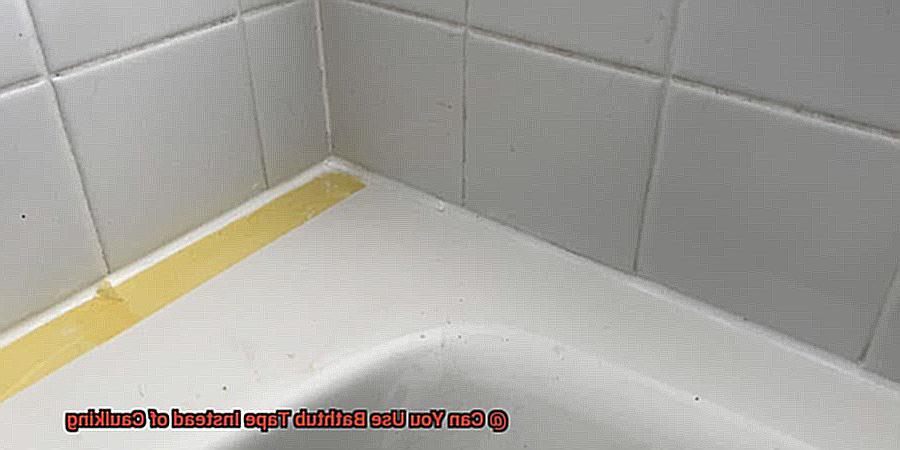
With bathtub tape, messy caulk is a thing of the past. Say hello to a sleek and easy-to-use alternative.
But the benefits don’t stop there. Bathtub tape also has a longer lifespan than caulking.
While caulking tends to dry out and crack over time, bathtub tape remains flexible and durable. This means that you’ll save money in the long run by requiring less maintenance than caulking.
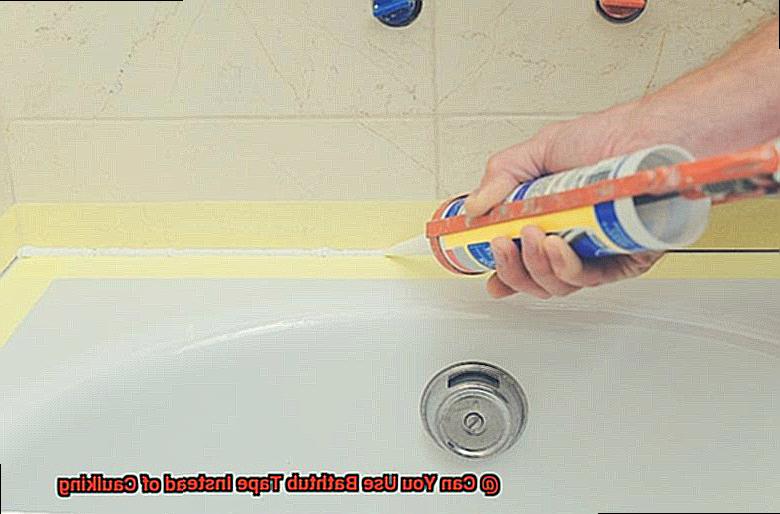
With bathtub tape, there’s no need to settle for basic colors that don’t match your current tile or tub.
Disadvantages of Using Bathtub Tape
When it comes to sealing your bathtub or shower, two options are available: caulking and bathtub tape.
Although bathtub tape may seem like a sleek and quick fix to the mess and annoyance of caulking, homeowners should consider several disadvantages before making the switch. Firstly, bathtub tape is not as durable as caulking.
While it may provide a temporary solution, it is likely to wear out or peel off over time. This means that homeowners may have to replace the tape more frequently than they would need to recaulk their bathtub.
Think of it like buying a cheap pair of shoes that will only last for a short period rather than investing in a high-quality, long-lasting pair. In addition, bathtub tape may not be as effective at preventing water damage as caulking.
Over time, water can seep through gaps in the tape and cause damage to the walls or subflooring. This can lead to costly repairs and even mold growth if left untreated.
It’s like trying to cover a wound with a band-aid when you need stitches – it won’t fix the problem long-term. Another disadvantage of using bathtub tape is that it may not be as aesthetically pleasing as caulking.
While some tapes come in clear or neutral colors, many tapes are only available in bright colors or patterns. This can make it difficult to achieve a seamless and cohesive look in the bathroom.
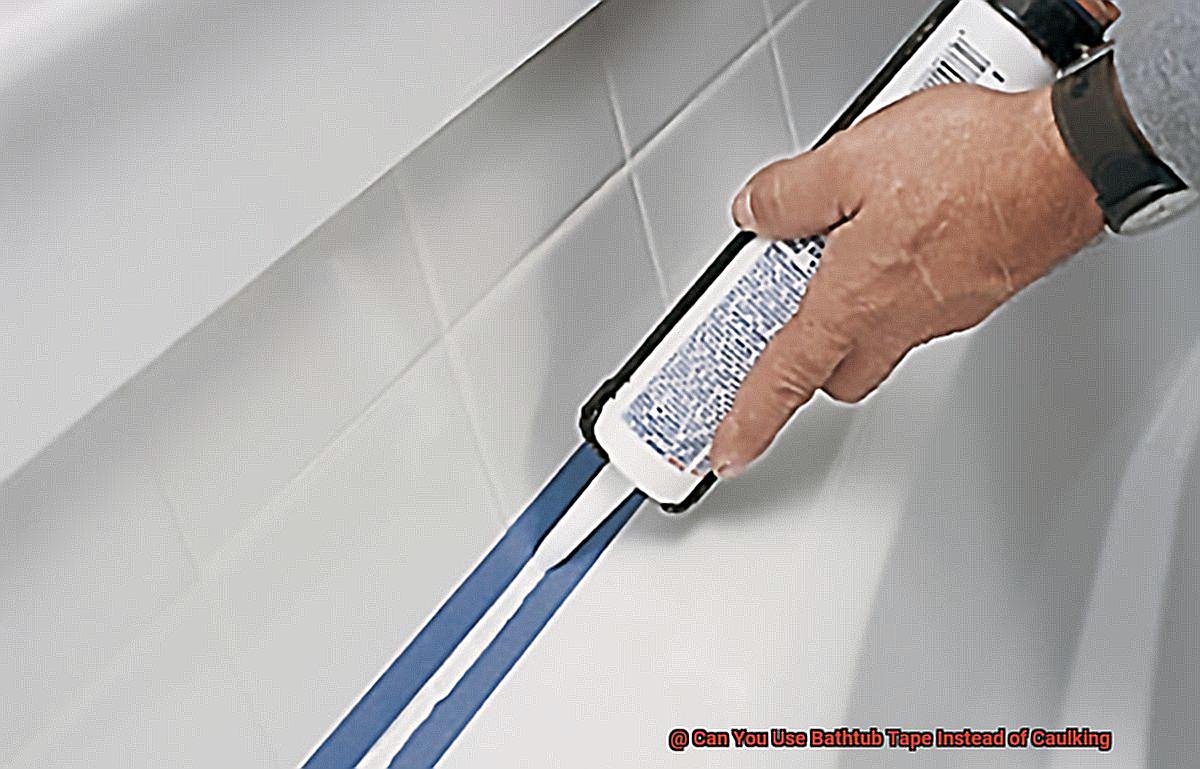
It’s like wearing an outfit that doesn’t match – it’s trendy but not particularly chic. Lastly, applying bathtub tape may not be as easy as applying caulk with a caulking gun.
Some tapes require separate adhesives or primers to be applied first, making the process more time-consuming and complicated. It’s like trying to assemble furniture without instructions – it will take longer and be more frustrating.
Homeowners should consider the disadvantages before deciding whether to use bathtub tape or traditional caulking for their bathroom projects.
Are There Any Alternatives to Caulking and Bathtub Tape?
Let’s dive into some of the best alternatives that you can use based on your personal preferences and needs. One alternative to caulking is a silicone-based sealant.
With its flexibility and durability, it’s ideal for high-traffic areas such as bathtubs or showers. Plus, it’s resistant to mold and mildew, ensuring cleanliness in your bathroom.
Another option is a grout sealer. Its primary function is to protect grout lines from moisture and staining, but it can also effectively seal gaps around your bathtub or shower.
Keep in mind though that grout sealer isn’t as flexible as silicone-based sealants, so it may not be suitable for areas with a lot of movement. If you’re not fond of using either caulking or tape, adhesive strips can also be an excellent alternative.
These strips are easy to apply and remove, making them perfect for renters or those who want a temporary solution. In conclusion, while caulking and bathtub tape are the most commonly used methods for sealing your bathtub or shower, other alternatives exist depending on what you need.
It’s essential to choose the option that works best for you and provides the most effective seal for your bathroom.
What Should You Consider Before Installing Bathtub Tape?
Before jumping in, let’s take a moment to consider a few key factors that will help ensure a successful and long-lasting repair job. First and foremost, it’s important to assess the condition of your bathtub and surrounding surfaces.
Any existing caulk or residue could interfere with the tape’s ability to stick, so be sure to thoroughly clean and dry the area before applying any tape. Next, consider the type of bathtub tape you plan on using.
With so many options available, it’s important to choose a product that is best suited for your specific needs. Some tapes are designed for cracks or leaks, while others may be better suited for sealing edges or corners.
Durability is also an important consideration. While some tapes may provide a quick fix, they may not hold up over time.
Invest in a high-quality tape that can withstand regular use and exposure to water and other elements. Finally, think about the installation process itself.
While bathtub tape can be a relatively easy solution for some repairs, others may require more advanced skills or equipment. If you’re unsure about your ability to install the tape correctly, don’t hesitate to consult with a professional before proceeding.
How to Install Bathtub Tape?
Are you tired of dealing with messy and time-consuming caulking when sealing your bathtub? Look no further than bathtub tape. This self-adhesive strip is a fast and efficient way to seal gaps and cracks around your bathtub.
With a few simple steps, you can have a watertight seal that will last for years.
Clean the Surface Thoroughly
Before applying the tape, it’s crucial to clean the surface thoroughly. Use rubbing alcohol or a cleaning solution to get rid of any dirt, dust, or debris. A clean surface will ensure that the tape adheres properly and creates a tight seal.
Measure and Cut the Tape
Measure the length of the area you want to cover with the tape and cut it accordingly. Leave a little extra length to ensure complete coverage.
Apply the Tape
Remove the backing from the tape and align it with the edge of your bathtub or shower. Smooth out any bubbles or wrinkles as you apply it to ensure a tight seal. Repeat this process until you cover the entire area you want to seal.
Smooth Out Excess Tape
After applying the tape, use a caulking tool or your finger to smooth out any excess tape and ensure that it adheres to the surface properly.
Allow Time to Set
Wait at least 24 hours before using your bathtub or shower to allow the tape to set properly.
RxTWiOk0KxU” >
Conclusion
In conclusion, when it comes to repairing your bathtub or shower, you have two main options: caulking and bathtub tape.
While both have their pros and cons, bathtub tape is an excellent alternative for those seeking a quick and easy solution without the mess of traditional caulking. It’s lightweight, breathable, and can be applied directly over existing caulk or tile.
Plus, it comes in a variety of colors and widths to match your bathroom decor. However, before using bathtub tape as a long-term fix, homeowners should consider its durability against water damage compared to caulking.
Frequent replacements may be necessary depending on the quality of the tape used. Additionally, some tapes are not aesthetically pleasing or require additional adhesives for assembly.
If you’re unsure which option to choose, there are other alternatives available such as silicone-based sealants or grout sealer. Before installing bathtub tape or any other product, ensure that the surface is thoroughly cleaned and choose a high-quality product that meets your specific requirements.
Overall, with proper installation and care, bathtub tape can be a cost-effective and durable substitute for small gaps and cracks around your tub or shower.

